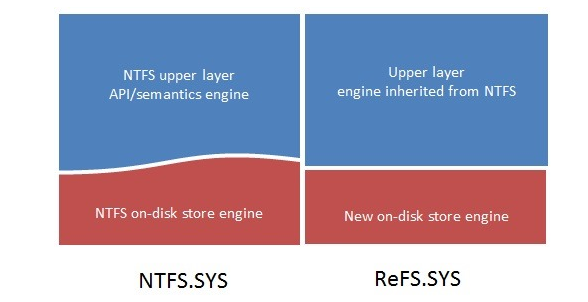Microsoft goes public with plans for its new Windows 8 file system

Microsoft officials are finally sharing publicly details about "Protogon," the new file system that the company is developing as part of Windows 8.

ReFS will begin life as a storage system for Windows Server only. Then -- some time post Windows 8 -- it will become a storage system for Windows clients, and then ultimately "as a boot volume," said author of the post, Surendra Verma, a development manager on the Windows Storage and File System team. (Interestingly, when the first leaks about ReFS, codenamed Protogon, occurred last year, those who discovered the new file system found it in leaked Windows 8 client builds.)
NTFS, the New Technology File System, has been part of Windows since Windows XP and Windows NT 3.1 were introduced in 2001 and 1993, respectively. (Thanks for the date corrections, readers.)
There are some NTFS features for which Microsoft plans to drop support with ReFS, specifically named streams, object IDs, short names, compression, file level encryption (EFS), user data transactions, sparse, hard-links, extended attributes, and quotas, Verma blogged. That said, one of Microsoft's goals with ReFS is to "maintain a high degree of compatibility with a subset of NTFS features that are widely adopted while deprecating others that provide limited value at the cost of system complexity and footprint," Verma said.
ReFS is designed to complement the Storage Spaces feature in Windows 8 and Windows Server 8. It will help with the verification and auto-correction of data and optimize for scale, according to the post. Here's Verma's explanation of the internals:
"Underneath this reused portion (the code responsible for implementing the Windows file system semantics), the NTFS version of the code-base uses a newly architected engine that implements on-disk structures such as the Master File Table (MFT) to represent files and directories. ReFS combines this reused code with a brand-new engine, where a significant portion of the innovation behind ReFS lies."
It's interesting to hear that Microsoft is doing what very early rumors about Windows 8 claimed it would: Introduce a new file system. (Though to be fair, some early tipsters claimed the Softies planned to do away with the core file system all together in Windows 8....)
Update: As reader Mahesh Sreekandath (@msreekan) noted in the comments below, NTFS, despite its longevity, hasn't always been architected to handle tasks in the most elegant manner. (See Softie Raymond Chen for an example.) Microsoft execs don't want to come out and diss NTFS, since it's the file system inside Windows 7 and Windows Server 2008 R2. But if you're wondering why Microsoft is thinking about reengineering the file system, just know it seemingly could stand some improvement.